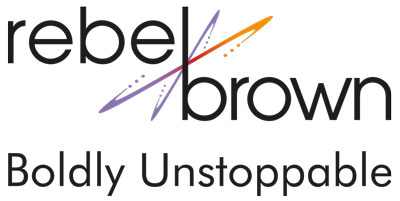I know that you’ve all met someone who only needs one or two pieces of evidence to be convinced about your strategy, product, service or approach. I know you’ve also met someone who took every bit of evidence you had and still needed more to be convinced.
Welcome to the convincer strategy. Our convincer strategies determine what it takes to convince us of anything – from a good idea to a good person to a good job. We all have our own unique convincer strategies and we may have different strategies for different types of situations.
Understanding what it takes to convince someone is a great skill for all of us. Imagine knowing exactly what it’s going to take to convince someone of the value of your idea or offer. Then imagine being prepared with the exact insights and information they need to come on board and stay on board.
The Anatomy of the Convincer Strategy
Each of our convincer strategies has two parts.
Part 1
We first need to understand how senses drive individual convincer strategies. We each have a variety of strategies that drive our behaviors and actions. Every strategy is driven by specific sensory data. So once we understand that, we understand what type of data someone needs to become convinced.
How do we learn that? Ask them a few questions about how they were convinced about a recent belief, behavior or decision. For example:
Think back to a time when you had a great boss. How did you know that person was a great boss?
- Did you see something that convinced you?
- Did you hear something?
- Did you get a feeling?
- Did you read some information?
People may give responses that cover more than one sensory input, for example they may need to see, then read then feel good about their decision. That tells you that when you are convincing them, you need to give them visual information first, then details and facts and then help them find a feeling of support.
Part 2
The second facet of our convincer relates to time. How much time, how many repetitions and how consistently does someone need to receive their positive sensory data (from #1) to become and remain convinced.
We can ask questions to discover this part of their strategy as well. For example, as an extension of the above question…
How quickly did you decide that boss was a great boss?
- I decided immediately
- I had to work with them successfully a number of times then decided
- I had to work with them over a period of time to be comfortable
- I had to see their positive behaviors consistently after I made the decision.
Some people only need for you to prove yourself once. Others need it multiple times over a period of times. Still others, well you’ll need to prove it every day for them.
The Impact on Leadership
Understanding other’s convincer strategies helps us build the rapport and trust we need to act as successful leaders. Aside from knowing what it takes to convince someone, we can also give specific attention to each of our team’s needs. They’ll feel more comfortable with us and their role, which will drive productivity and performance. For example:
- If someone has a need to be consistent need for convincing, you’ll know that you need to do or share something every day to keep them involved and motivated. The convincing can be about you and your leadership, about the goal, the project or others in the team. Maybe they need to be told they’re doing a great job, perhaps they need public rewards. These folks simply need more consistent validation so – give it to them.
- Other folks are easy to convince. Once you show them the appropriate information, they are yours for life. They are not really more trusting than the above folks. They’re simply running a different program than those who need constant convincing.
- Then there are the folks who range anywhere between the two extremes. Maybe they need a word of praise, a reminder of the value of the project or perhaps input from others that the goal is important. Whatever their strategy, give them what they need and they will stay onboard and motivated.
The Bottom Line
The convincer strategy gives leaders more insights into how to successfully create a powerful belief and trust. Whether you need to convince someone of the power and appropriateness of your product, goal or process, the convincer is a great path. By the way, it works in relationships too.







3 Comments
Dan Forbes
June 17, 2013 - 8:52 amHi Rebel, Thanks for the post. What I get from this also is that people like to receive information in different ways. Some are auditory, some are visual, some are kinesthetic.
You use the term “convincer strategy” and that’s one way to look at it. And, aren’t we really talking about what it takes to build TRUST?
Thanks for making me think.
rebel brown
June 17, 2013 - 9:37 amHi Dan
Darned, I wrote a reply and my blog ate it. Doncha hate that:):)
First, let me clarify that we have dozens to hundreds of programs (metaprograms and filters) that drive our decisions and our behaviors. I’ve been describing each of the metaprograms in detail over the last few days, yet none of them act alone. I wish we were that simple and straightlined, but we’re not:)
Second – the Convincer Strategy is the formal name of the metaprogram I described in this post. It’s not my name – it’s the name given by many others:) This strategy does have an impact on all of the things you mention – but it’s primary function is to define how much evidence you need, how often you need that evidence and how long you’ll need timewise to decide to be convinced.
Thirdly – Yep, we all have different representation systems (visual, auditory, kinesthetic and/o r digital. These rep systems influence everything we do, along with all the meta programs and filters and mindware that drives our lives. The rep system will determine what information types we prefer (video, audio, touching something or data to analyze) – but thats not the convincer side of the equation. The Convincer is about what’s above.
When it comes to trust – there are many programs involved. To me, trust is different than evidence. I trust a person but I need evidence about a product. The former is more about creating Unconscious Rapport, the latter is more about our Convincer Strategy.
Hope that clarifies and thanks for the insights and great questions!
reb
jhonase virtucio
January 4, 2015 - 11:33 pmI really appreciated about convincer strategy.
But I confused about some people are strongly beliefs there self that they are always right but they don’t know they hurt others of what he/she done…
My point is how to open his/her mind that’s they making in a wrong ways of decisions?